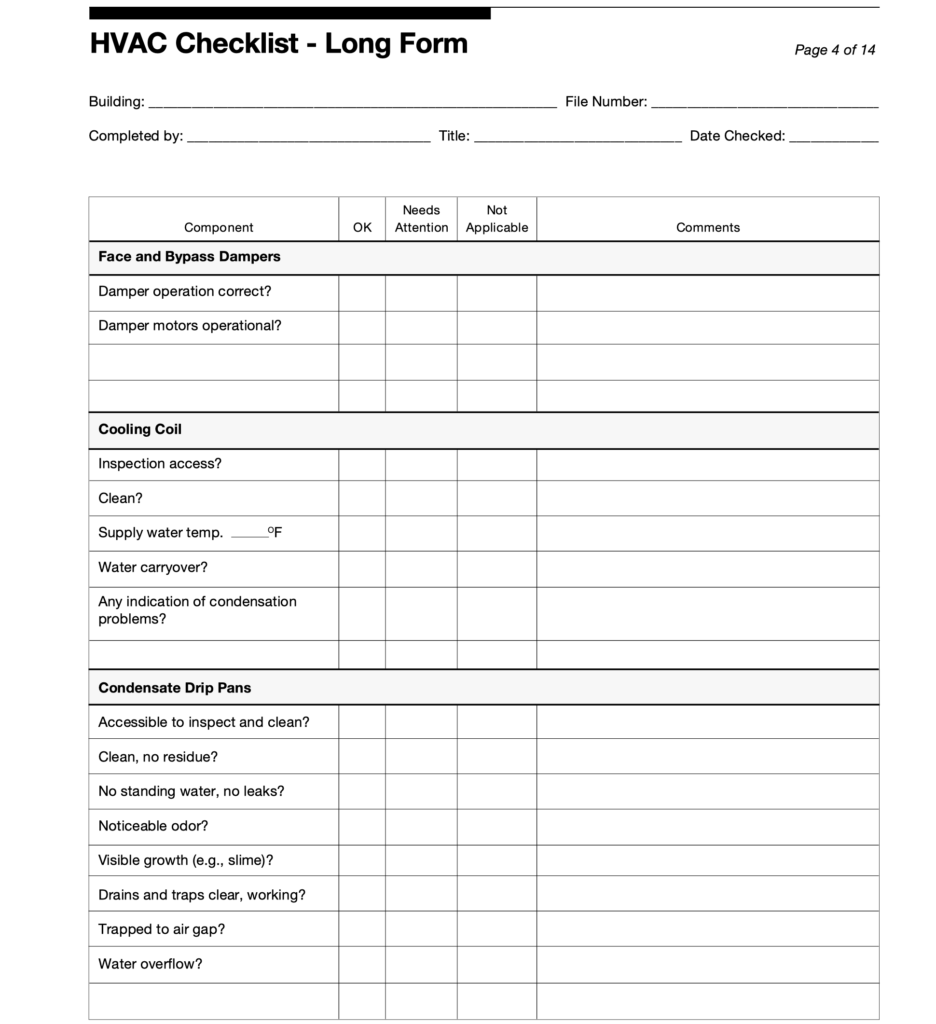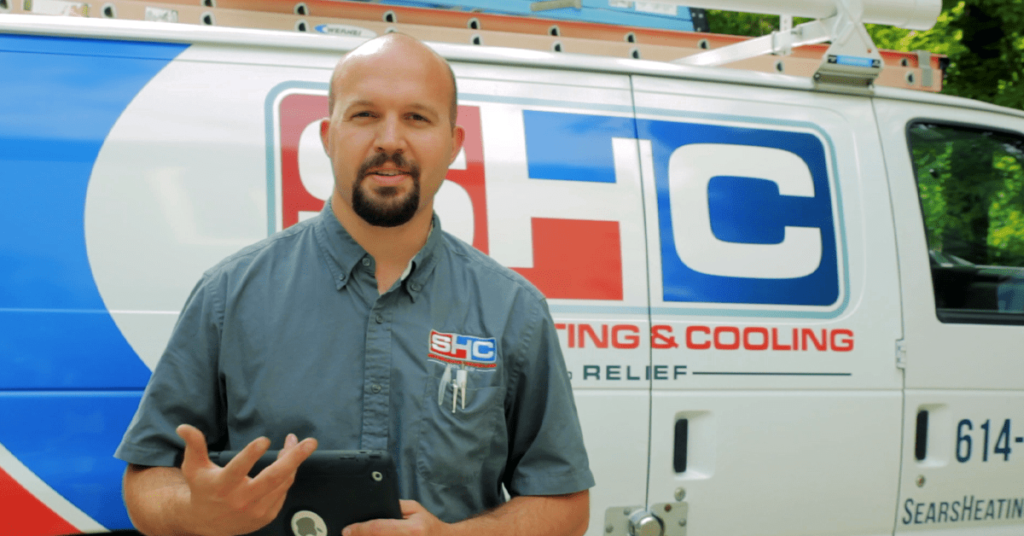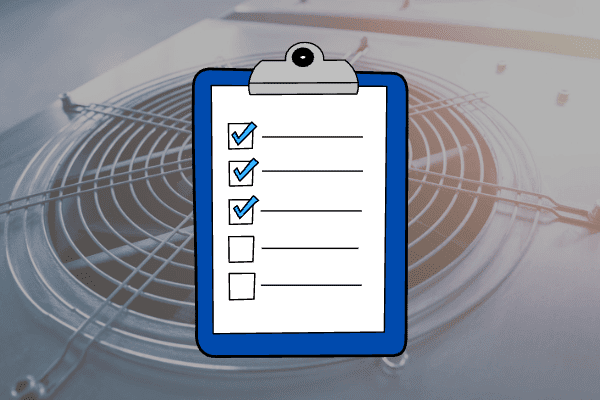The Benefits of a Good HVAC Inspection Checklist
By My Service Depot on Friday, December 2, 2022An HVAC inspection checklist is the ultimate tool for HVAC technicians. It ensures that they cover all major areas of the HVAC system during inspection.
Did you know that HVAC systems account for 39% of all energy use in commercial buildings in the United States? That number is only going to rise as the country continues to recover from the coronavirus pandemic and more people return to their offices.
When you consider the sheer amount of electricity that these systems consume, it’s no wonder that business owners are always looking for ways to improve their energy efficiency. One way to do that is by regularly conducting HVAC inspections using a comprehensive checklist. Here’s a closer look at how an HVAC inspection checklist benefits your business.
How an HVAC Inspection Checklist Benefits Your Business

Helps you save money on energy costs:
Regularly inspecting your HVAC system can help you identify areas where your system is wasting energy. By making small tweaks and adjustments, you can significantly reduce your monthly energy costs. In fact, according to the U.S. Department of Energy, businesses can save up to 30% on energy costs by implementing energy-efficient measures like regular HVAC maintenance.
Reduces wear and tear on your HVAC system:
Another benefit of regularly conducting HVAC inspections is that it helps reduce wear and tear on your system. By keeping your system clean and well-maintained, you can extend its lifespan and avoid costly repairs down the road. In fact, research has shown that preventive maintenance can extend the life of an HVAC system by up to 95%.
Improves indoor air quality:
Poor indoor air quality can lead to a host of health problems like headaches, dizziness, and respiratory infections. By regularly inspecting and cleaning your HVAC system, you can improve indoor air quality and create a healthier environment for your employees.
Boosts productivity:
When employees are comfortable, they’re more productive. That’s why it’s important to keep your HVAC system running properly at all times. If your office is too hot or too cold, it can make employees feel sluggish and unproductive. But if the temperature is just right, they’ll be able to work at their full potential.
Keeps your warranty valid:
Most manufacturers require regular HVAC maintenance in order for the warranty to remain valid. So, if something does go wrong with your system, you’ll be covered financially as long as you’ve been following the manufacturer’s guidelines for maintenance and care.
Helps you comply with safety regulations:
There are a variety of safety regulations that businesses need to comply with—and some of them apply to HVAC systems specifically. For example, OSHA requires businesses to have certain types of ventilation in place in order to protect employees from harmful fumes or chemicals that could be released into the air during certain industrial processes conducted in the office space. By regularly inspecting your ventilation system, you can ensure that it’s up to code and compliant with all relevant safety regulations.
HVAC Systems Not Regularly Inspected
If your HVAC system isn’t inspected regularly, it can lead to a number of problems. One of the biggest dangers of not having your HVAC system inspected is that it can seriously reduce the life of your system. This is because when the system isn’t properly maintained, dust and dirt can build up inside the unit and cause it to work harder than it should. This can lead to early failure of the components and increased energy costs as the unit struggles to keep your home or office at a comfortable temperature.
There are also many other dangers that a poorly maintained HVAC system can pose. For example, if the coils in the unit are dirty, it can lead to a fire hazard. Similarly, if the filters aren’t changed regularly, it can allow for unhealthy levels of moisture and mold to grow in your home or office.
It’s important to have your HVAC system inspected on a regular basis in order to ensure that it’s running safely and efficiently. An inspection checklist can help you make sure that nothing is missed during the inspection.
By following a simple HVAC inspection checklist, you can help prolong the life of your system and keep your family safe. Schedule an inspection today to ensure that your home or office are as comfortable as possible.
How to Make an HVAC Inspection Checklist
If you’re looking to conduct a thorough HVAC inspection, it’s important to have a checklist handy. A good HVAC inspection checklist should include all of the items that your technician will check during the inspection process. Here are some tips for creating your own HVAC inspection checklist:
Start with the basics:
Your checklist should start with the basic components of your HVAC system. This includes things like the furnace, air conditioner, and ventilation system. Make sure to list out all of the specific components of each system so that your technician can check them during the inspection.
Include safety checks:
Safety is always a top priority when it comes to HVAC inspections. That’s why it’s important to include safety checks in your checklist. This includes things like checking for hazardous gases or fumes in the work area, ensuring that employees are wearing proper safety gear, and making sure that all of the safety equipment is in working order.
Check for compliance with regulations:
Make sure to include any relevant safety regulations in your checklist so that your technician can check for compliance during the inspection process. This might include things like checking for proper ventilation or ensuring that all of your safety equipment is up to code. This also applies to changes in the systems themselves, it’s important to update your checklist for all the changes to keep it up to date and accurate.
Check for wear and tear:
A good HVAC inspection should also include a thorough assessment of wear and tear on all of the components in your system. This includes checking belts, filters, and coils for damage and wear, and making sure that all screws and bolts are tight and secure.
Inspect ductwork:
The ductwork in your office is an often overlooked but essential part of your HVAC system. Make sure to include a section in your checklist specifically devoted to inspecting the ductwork. This includes checking for leaks, damage, and blockages, and making sure that the ducts are properly insulated.
What an HVAC Inspection Checklist Should Look Like

When it comes to your home’s heating, ventilation, and air conditioning (HVAC) system, an ounce of prevention is truly worth a pound of cure. That’s why it’s important to have a good HVAC inspection checklist to help you stay on top of things.
A good HVAC inspection checklist should include tasks like:
- Checking the filters and replacing them if necessary
- Inspecting the coils for dirt or damage
- Checking the wiring for signs of corrosion or damage
- Checking the refrigerant levels
- Inspecting the ducts for leaks or damage
- Checking the ventilation system for proper airflow
Having a well-organized HVAC inspection checklist can help you catch small problems before they turn into big ones. It can also help you save money on energy costs by ensuring that your HVAC system is running as efficiently as possible. If you need a place to start, check out the EPA’s comprehensive long form HVAC inspection checklist.
What a Bad HVAC Inspection Checklist Can Do
A bad HVAC checklist can lead to big problems down the road. If your checklist doesn’t include all of the necessary tasks, your HVAC system may not be running as efficiently as it should be. This can lead to increased energy costs and even HVAC system failures.
A bad HVAC inspection checklist can also cause safety problems. If important safety checks are missed, your HVAC system may not be up to code. This could lead to accidents or even injuries.
Furthermore, checklists that are poorly designed can cause you to waste time. When you’re constantly running around from job to job, every second counts. If your checklist forces you to check off irrelevant items or things that aren’t required, it’s eating into valuable time that could be spent on the next job. Inefficient checklists add minutes to each task which eventually translates into longer days and less opportunity for free time outside of work.
Make sure to carefully inspect your HVAC inspection checklist before use. Make sure that all of the tasks included are relevant to your specific system and that they cover all of the bases. By doing so, you can help ensure that your HVAC system is running safely and efficiently.
Should You DIY Inspection
While it may be tempting to try and DIY an inspection of your HVAC system, it’s important to remember that this is a job best left to the professionals. HVAC systems are complex and can be dangerous if not properly maintained.
A professional HVAC inspection will include a comprehensive assessment of all the components in your system. They will check for wear and tear, damage, and compliance with safety regulations. They will also inspect the ductwork and ventilation system to ensure that they are functioning properly.
DIY inspections often miss important details that can lead to bigger problems down the road. By hiring a professional HVAC inspector, you can rest assured that your system is in good hands and won’t be failing unexpectedly.
What to Do if Your HVAC System Fails

If your system isn’t getting the proper inspections that it needs it may fail or break in some way. When your HVAC system fails, it can be a big inconvenience. Not only will you be without heat or air conditioning, but you may also find yourself unable to do your job properly. In some cases, an HVAC failure can even be dangerous.
If your HVAC system fails, the best thing to do is call a technician. They will be able to diagnose the problem and recommend a solution. In some cases, the problem may be something that you can fix yourself. However, it’s always best to consult with a professional before attempting to fix anything on your own.
If your HVAC system is old or outdated, it may be time for a replacement. A good HVAC technician can help you figure out if it’s time for a replacement and can recommend the best unit for your needs.
Never attempt to repair whatever issue you’re experiencing by yourself–always phone a technician. If you go ahead and try to fix the problem on your own, then chances are that you’ll only end up causing more damage which will then require additional money to replace what was broken.
Conclusion
As you can see, there are many benefits of regularly conducting HVAC inspections using a comprehensive checklist. Not only will it help you save money on energy costs, but it will also improve indoor air quality and keep your employees productive. Additionally, it will keep your warranty valid in case something does go wrong with your system down the road. So why wait? Implement an HVAC inspection checklist today!
Just as an HVAC inspection can be helpful, so can field service management software. If you run an HVAC business and are struggling to stay competitive or keep up with demand, look no further, Smart Service has your back! With Smart Service software you can streamline everyday work processes like scheduling, routing, and dispatching.
You can even take it a step further and empower your field service technicians with our mobile app iFleet. The iFleet app allows your techs to take job notes, update customer information, accept payment, and get optimized directions to job sites, all in the field and in real-time! Smart Service even offers a free demo, so see for yourself all of the different ways that this field service software can benefit your business!


